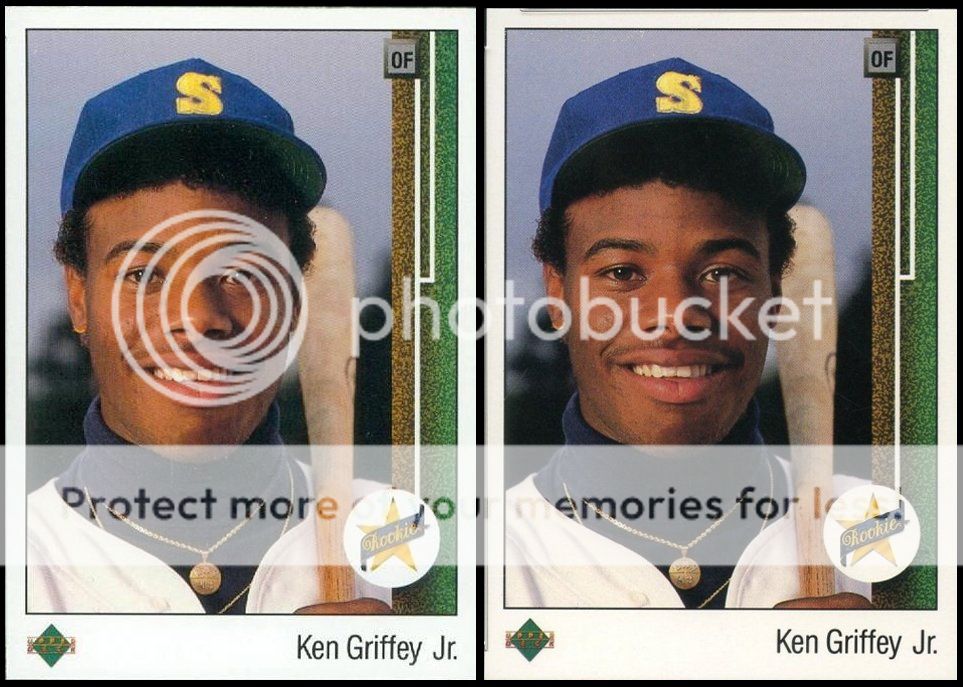CamaroDMD
Insert Cool Title
When I first got out of card collecting (later 1990s) it seemed that professional card grading was just starting to get popular. I personally transitioned from card collecting to coin collecting and discovered a world that was very into the idea of grading and certifying coins.
I knew that Collector's Universe (who is the parent company of coin grading giant PCGS) also had a card/sports memorabilia grading service (PSA) but was never really exposed to it until I returned to the card hobby a few years back.
Now, coins are graded on a scale of 1-70. Many collectors believe that a coin graded "70" isn't really a true thing...that it is almost a sales gimmick made up by the grading companies to encourage competition within their registries. A lot of the evidence to this is in the fact that the difference between a 69 and a 70 is so infinitesimally minor...that the price difference (which is sometimes great) isn't worth it.
So, when I discovered PSA graded cards (and their competitors)...I assumed the same thing.
Based on what I have seen, this is essentially true. The difference between a "9" and a "10" is so small I really can't tell a 9 and 10 apart when placed side by side. So, I personally don't see why I should pay the (sometimes) huge price difference.
Take this card for example, the 1989 Upper Deck Ken Griffey Jr. RC. This is a card that is currently high on my "want list." I had been planning on getting a PSA 10...but the based on eBay sales, the going rate for a 10 is $250-$300. I can get a PSA 9 for $35-$50. That is a significantly large price difference for virtually identical cards. It just seems crazy to me to pay PSA 10 money.
Here is a pair of PSA graded UD Griffey RCs...one is a 9 and the other is a 10. I took these pics off eBay from different sellers so the scans aren't ideal. But, I certainly don't see a huge difference between the two. I think I'd be happy with the 9 out of this pair...wouldn't you?

I knew that Collector's Universe (who is the parent company of coin grading giant PCGS) also had a card/sports memorabilia grading service (PSA) but was never really exposed to it until I returned to the card hobby a few years back.
Now, coins are graded on a scale of 1-70. Many collectors believe that a coin graded "70" isn't really a true thing...that it is almost a sales gimmick made up by the grading companies to encourage competition within their registries. A lot of the evidence to this is in the fact that the difference between a 69 and a 70 is so infinitesimally minor...that the price difference (which is sometimes great) isn't worth it.
So, when I discovered PSA graded cards (and their competitors)...I assumed the same thing.
Based on what I have seen, this is essentially true. The difference between a "9" and a "10" is so small I really can't tell a 9 and 10 apart when placed side by side. So, I personally don't see why I should pay the (sometimes) huge price difference.
Take this card for example, the 1989 Upper Deck Ken Griffey Jr. RC. This is a card that is currently high on my "want list." I had been planning on getting a PSA 10...but the based on eBay sales, the going rate for a 10 is $250-$300. I can get a PSA 9 for $35-$50. That is a significantly large price difference for virtually identical cards. It just seems crazy to me to pay PSA 10 money.
Here is a pair of PSA graded UD Griffey RCs...one is a 9 and the other is a 10. I took these pics off eBay from different sellers so the scans aren't ideal. But, I certainly don't see a huge difference between the two. I think I'd be happy with the 9 out of this pair...wouldn't you?

